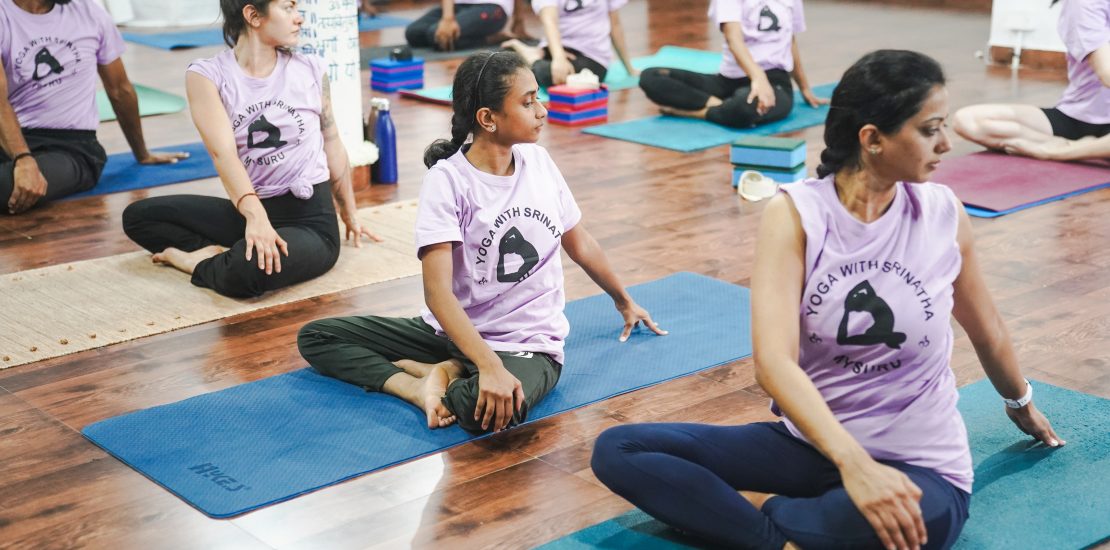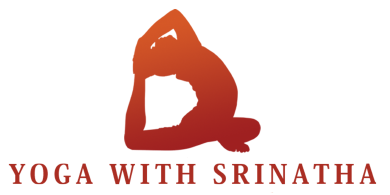- November 28, 2022
- Posted by: Yoga With Srinatha
- Category: Yoga

Yoga is one of the best forms of exercise to keep oneself mentally as well as physically fit, though yoga also helps in the spiritual awakening of an individual. With a history and cultural evolution of 3000 years, yoga has become popular across the world for its healing powers. Practise it with utmost passion and you will feel the energy of the universe resonating with your mind and soul. Though every style of yoga has its own merits for Beginners, as well as advance level practitioners.
Ashtanga yoga is believed to provide the individual with happiness, discipline, devotion, inner peace, and consciousness. But can beginners practise it the way adults do? Well, scroll down to find out more about Ashtanga yoga.
What is Ashtanga Yoga?
Ashtanga Yoga is one of the most dynamic and energetic forms of yoga that require intense dedication and devotion to excel in its poses. Ashtanga is derived from two Sanskrit words, namely Ashta, which means eight, and Anga which refers to limbs. So, Ashtanga yoga is basically an eight-limbed yoga that is performed in a series of set sequences of yoga poses.
Breathwork is a significant part of this style as you need to keep using your breath during the transition between poses. Though it was mentioned thousands of years ago in Yoga Sutras by Patanjali, it was popularised in Mysore by K. Pattabhi Jois, a renowned yoga guru. Hence, it is largely associated with Ashtanga Yoga Mysore.
The Eight Limbs of Ashtanga Yoga
Ashtanga Yoga is practised by following certain steps wherein you need to focus on your physical, mental, and spiritual sides. These steps make up the eight limbs of Ashtanga Yoga which include:
- Yamas – social restraints and moral codes and ethics
- Niyamas – Self-discipline and duties
- Asana – Yoga poses
- Pranayama – Practice of controlling breath
- Pratyahara – Withdrawal of energy from senses
- Dharana – Fixed attention or concentration
- Dhyana – Meditation
- Samadhi – Union of the soul with the universe
Benefits of Ashtanga Yoga
Ashtanga Yoga is one of the most popular yoga styles and is practised by Beginners,enthusiasts and fitness freaks all around the world. Though it requires a certain level of patience, discipline, and dedication, it can benefit you in multiple ways once excelled. The major benefits of Ashtanga Yoga include:
- Helps in the overall well-being of an individual by providing physical mental and mental stability with the help of tough yoga poses
- Helps in mindful eating and improves digestion
- Believed to cure several diseases and disorders like arthritis, anxiety, depression, blood pressure, cholesterol, etc.
- Calms the nervous system, thereby, providing you with a peaceful mind
- Relieves chronic back pain and other body aches
Who Can Practise Ashtanga Yoga? Beginners?
Ashtanga Yoga may look tough in the beginning, however, once you get the hang of its poses, it becomes too easy to practise on a daily basis. That’s the reason Ashtanga Yoga is perfect for Beginners to commence their yoga journey. You just need to know the set sequence and then all you have to do is to work on various poses while focusing on the breath.
As Beginners are free to learn at your own pace and do not have any pressure to deal with, you can excel in it with decent dedication and discipline. However, to deepen your practise, you would certainly need to practise it with all intents and patience. So, these are the reasons Ashtanga Yoga can be practised by people of all age groups unless they suffer from some physical or mental problems.
What is the Ashtanga Yoga Sequence?
Ashtanga Yoga sequence is generally a set series of yoga poses that are supposed to be performed in a fixed manner. It starts with Sun salutation A, which includes 9 vinyasas (breath-flow movement) and then you move to Sun salutation B, which includes 17 vinyasas. After the salutations, you start standing poses and then seated poses. The finishing sequence of Ashtanga Yoga includes slowing down breathing with inversions and backends. The yoga ends with Savasana (corpse pose).
Poses In Ashtanga Yoga
Ashtanga Yoga is performed in a total of 75 poses that would take about 2 hours to complete. However, some of the most significant poses are noted below. These are the poses that would keep your body muscles and brain healthy and fit. These poses are said to purify and heal the mind, body, and soul. The list includes:
- Sun Salutation A
- Sun Salutation B
- Big Toe Pose Pose
- Forward Bend Pose
- Extended Side Triangle Pose
- Wide Legged Forward Fold Pose
- Intense Side Stretch Pose
- Hands Under Feet Pose
- Staff Pose
- Seated Forward Bend Pose
- Upward Plank Pose
- Boat Pose
- Crow Pose
- Wheel Pose
- Lotus Pose
- Corpse Pose
What to Read for Ashtanga Yoga (Beginners)?
Studying is also important whether you wish to learn Ashtanga Yoga, Hatha Yoga, or any other form of yoga as learning would develop your intellectual muscle and help you understand things in a better way. The major books to read on Ashtanga Yoga include:
Yoga Sutras (Patanjali)
Yoga Mala (K. Pattabhi Jois)
The Power of Ashtanga Yoga (Kino McGregor)
Ashtanga Yoga: Practice and Philosophy (Gregor Maehle)
Ashtanga Yoga: The Practice (David Swenson)
Tips to Practise Ashtanga Yoga For Beginners
- Do not give up easily as you will fail daily multiple times while practising various poses
- For Ashtanga Yoga, commitment is more important than flexibility and strength
- Focus on the breath as much as possible rather than giving maximum time to yoga poses
- Go on the internet and learn from various tutorials available
- Enrol in the best Ashtanga yoga school in Mysore and learn in detail about this form of yoga
- Do not rush your progress as Ashtanga yoga is a game of discipline and patience
- Study different books on Ashtanga yoga, its history, and evolution including Ashtanga yoga Mysore
- Sign up for Ashtanga Yoga courses in Mysore and learn from the best Ashtanga teacher Mysore
- Take breaks whenever you feel like it and always have a peaceful attitude towards Ashtanga yoga learning
